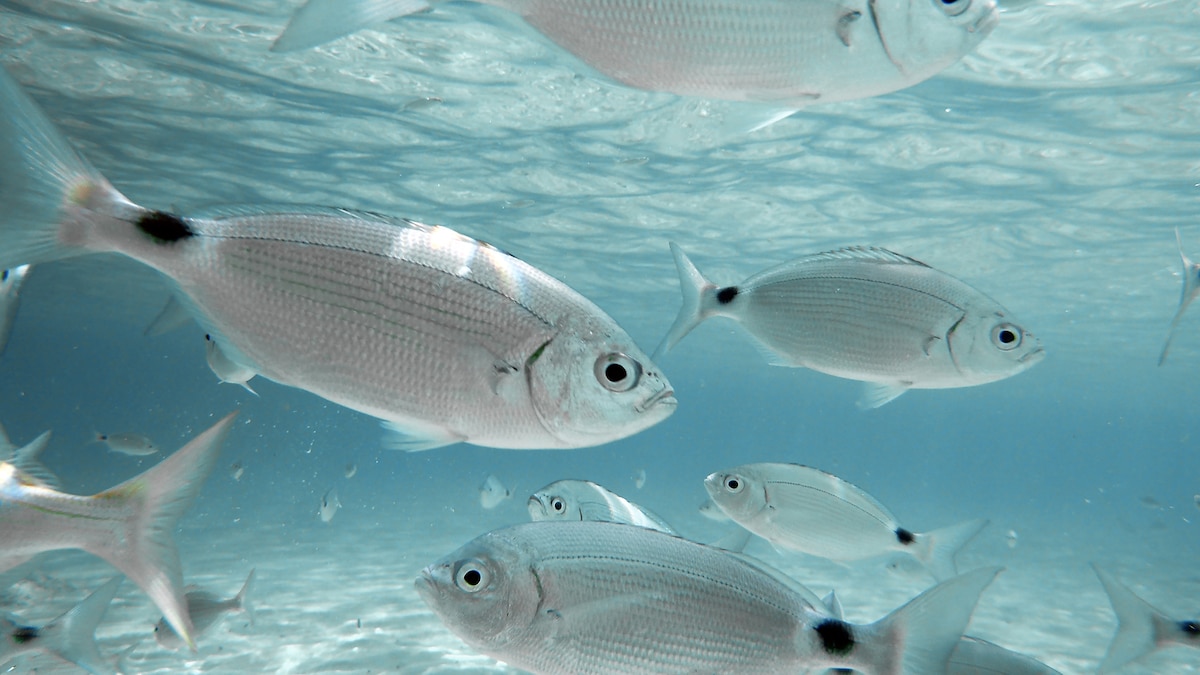Now Reading: Fish Recognize Favorite Divers Who Bring Snacks-Here’s How
-
01
Fish Recognize Favorite Divers Who Bring Snacks-Here’s How
Fish Recognize Favorite Divers Who Bring Snacks-Here’s How

Rapid Summary
- Alex Jordan, leader of the Behavioural evolution Lab at the Max Planck Institute, observed over 20 years that fish in the wild might recognize and follow individual researchers.
- His team conducted experiments on two species of Mediterranean fish, saddled sea bream (O. melanura) and black sea bream (S. cantharus), near Corsica.
- In initial tests, fish were trained to follow a diver (Katinka Soller) wearing a colorful vest by associating her with shrimp food rewards during dives over 12 days. An average of 13 fish learned to follow her.
- Subsequent experiments tested fish recognition skills using divers with different-colored gear or identical suits.
– When divers wore distinct colors, the fish followed the one giving food rewards after learning visual cues over time.- When divers wore identical suits, fish could not distinguish between them and followed both indiscriminately.
- The study shows how fish use visual cues like color to associate an individual human with a reward but stops short of proving they recognize human traits like faces or bodies.
- Researchers suggest caution during underwater studies as such behavior may bias results if scientists unintentionally effect how animals respond.
Images: none included in source text.
Indian Opinion Analysis
This research provides valuable insights into animal behavior and cognition in natural environments instead of controlled labs-an emerging field noted for its potential transformative contributions. While this study reveals that Mediterranean fishes associate visual markers (like color) with specific individuals due to reward patterns, it challenges broader assumptions around their ability to discern detailed attributes like faces.
For India’s biodiversity research context-home to countless aquatic species-it reinforces attention on behavioral evolution studies across diverse habitats: from Himalayan streams packed snow-trouts}},
























